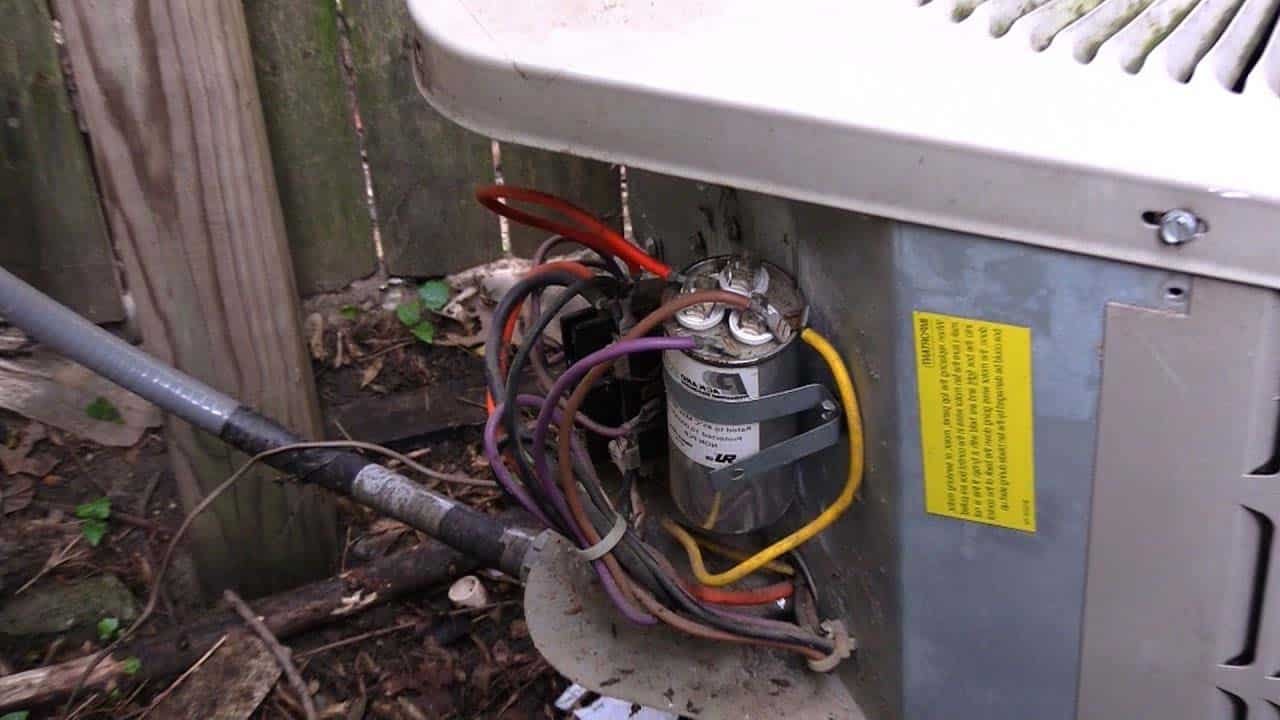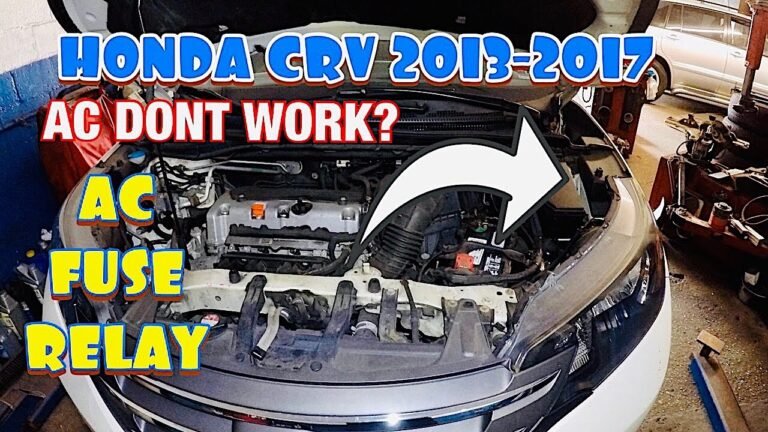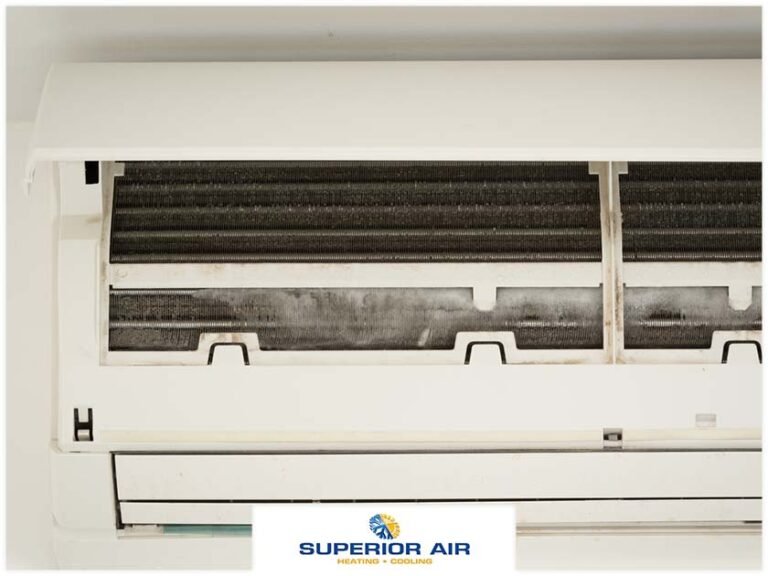Rv Ac Compressor Turns on But Fan Does Not: Troubleshooting Guide
The RV AC compressor turning on but the fan not running indicates a potential issue with the fan motor or capacitor. This problem can be caused by a faulty motor, a broken fan belt, or a failed capacitor.
It is important to address this issue promptly to avoid further damage to the AC system and ensure proper cooling in your RV.
The Basics: Understanding The Rv Ac System
Components of an RV AC system:
| Component | Function |
|---|---|
| Compressor | The compressor is responsible for compressing the refrigerant gas in the AC system, turning it into a high-pressure, high-temperature gas. |
| Fan | The fan is responsible for blowing air over the evaporator coil, facilitating the heat exchange process by transferring heat from the interior of the RV to the exterior. |
The compressor and fan interact in the RV AC system to provide cooling. When the AC is turned on, the compressor initiates the cooling process by compressing the refrigerant gas. The compressed gas then flows to the condenser coil, where it releases heat to the outside air. At the same time, the fan blows air over the evaporator coil, which absorbs heat from the interior air and cools it down. The cooled air is then distributed throughout the RV via the AC vents.
If the compressor turns on but the fan does not, it could indicate a problem with the fan motor, thermostat, wiring, or control board. It is recommended to seek professional help to diagnose and fix the issue, as working with AC systems requires specialized knowledge and expertise.
Troubleshooting No Fan Operation
When your RV AC compressor turns on but the fan does not, there are a few potential causes to consider.
Check Power Supply
Start by checking the power supply to ensure it is functioning properly. Make sure there is power going to the unit and that the circuit breaker or fuse is not tripped or blown. Also, check the thermostat to confirm it is set to the correct temperature and the fan is set to “ON” or “AUTO.”
Inspect Fan Motor
If the power supply is working correctly, the next step is to inspect the fan motor. Check for any visible signs of damage or overheating. Test the connections and wiring to make sure they are secure. If everything appears to be in order, use a multimeter to check the motor’s resistance. If the reading is outside the normal range, it may indicate a faulty motor that needs to be replaced.
Check Capacitor
In addition to the fan motor, the capacitor also plays a crucial role in fan operation. A faulty capacitor can cause the fan not to work even if the rest of the unit is functioning properly. Check the capacitor for any bulging, leaking, or other signs of damage. If any issues are detected, the capacitor will need to be replaced.
By following these troubleshooting steps, you can identify and address the most common reasons why your RV AC compressor turns on but the fan does not operate. Remember to consult a professional if you are unsure or if the problem persists.
Diagnosing Compressor And Fan Issues
When experiencing issues with your RV AC, it’s important to properly diagnose the problem to ensure effective troubleshooting. Here are some steps to follow:
Testing Compressor For Power And Functionality
| Step | Description |
|---|---|
| 1 | Check for power supply to the compressor. Ensure the circuit breaker and power switch are on. |
| 2 | Inspect the compressor wiring for any damages or loose connections. Tighten or replace as needed. |
| 3 | Test the compressor using a multimeter. Measure the resistance between the compressor terminals. If the reading is significantly higher or lower than the manufacturer’s specifications, it may indicate a faulty compressor. |
Troubleshooting Fan Motor And Blades
If the AC compressor turns on but the fan does not, the following steps can help identify and fix the issue:
- Check the fan motor for power supply. Ensure the circuit breaker and power switch for the fan are on.
- Inspect the fan motor wiring for any damages or loose connections. Secure or replace any faulty wiring.
- Manually rotate the fan blades to check for any obstructions or resistance. Clear away any debris that may be hindering the fan’s movement.
- If the fan motor still does not function, test it using a multimeter. Measure the resistance between the motor’s terminals. A significantly higher or lower reading compared to the manufacturer’s specifications may indicate a faulty motor.
Resolving Electrical Problems
Resolving electrical problems with an RV AC compressor that turns on but the fan does not is crucial for proper functioning of the system. One common issue is faulty capacitors, which can prevent the fan from running. Testing and replacing these capacitors is a necessary step in troubleshooting the problem.
| Testing Capacitors: | Use a multimeter to check if the capacitor is holding its charge and functioning properly. |
| Replacing Capacitors: | Identify the faulty capacitors by examining for physical damage or signs of bulging. Replace them with new ones of the same voltage and microfarad ratings. |
In addition to capacitors, checking the wiring connections is crucial. Ensure all connections are secure and not frayed or damaged. Loose or faulty connections can disrupt the electrical flow and cause issues with the fan. A thorough inspection of the wiring and repairing any damages is necessary.
By addressing these electrical problems, you can resolve the issue of an RV AC compressor turning on but the fan not operating, allowing for proper cooling and ventilation in your recreational vehicle.
Addressing Mechanical Fan Problems
When the RV AC compressor turns on but the fan does not, it is important to address mechanical fan problems promptly. Inspecting the fan blades for damage or obstruction is the first step in troubleshooting the issue. Look for any signs of bent, cracked, or broken blades that may be causing the fan to not function properly. Additionally, check for any obstructions such as debris or insects that may be blocking the fan’s movement.
Lubricating the fan motor bearings is another important maintenance task that can help prevent fan-related problems. Over time, the bearings may become dry or worn, resulting in issues with the fan’s operation. Apply lubricant to the bearings as per the manufacturer’s recommendations to ensure smooth and efficient functioning.
By addressing these mechanical fan problems diligently, you can prevent further damage to your RV AC system and keep it running smoothly for optimal cooling performance.

Credit: blog.totalhomesupply.com
Dealing With Refrigerant Issues
Having your RV AC compressor turn on but the fan not working can be a frustrating issue. One of the possible causes for this problem is a refrigerant issue. It is essential to check the refrigerant levels in your RV AC system regularly. Low refrigerant levels can result in the AC compressor working without cooling properly. It is also important to check for leaks in the system as they can lead to a loss of refrigerant. Identifying and repairing these leaks is crucial to ensure the efficient functioning of your RV AC unit. If you notice that the AC compressor turns on but the fan does not, checking the refrigerant levels and addressing any leaks should be the first course of action.
Fixing Thermostat Malfunctions
A common issue when the RV AC compressor turns on but the fan does not work is a malfunctioning thermostat. To troubleshoot this problem, you can start by testing the thermostat for proper operation. Check if the thermostat is set to the right temperature and mode. You can also try adjusting the temperature settings to see if the fan starts working. If the thermostat seems to be functioning incorrectly, it may need to be calibrated or replaced.
Other Potential Causes And Solutions
Other potential causes and solutions for an RV AC compressor turning on but the fan not working include checking for circuit board problems and evaluating control module functionality.
When troubleshooting the issue, it’s important to ensure that the circuit board is functioning correctly. Inspect the circuit board for any visible signs of damage or loose connections. Replace or repair any faulty components as necessary.
In addition to the circuit board, evaluating the control module functionality is crucial. The control module is responsible for regulating the operation of the fan. Test the control module using a multimeter to check if it is receiving proper power supply and sending correct signals to the fan.
If the circuit board and the control module are both in good working condition, it may be worth considering other potential causes such as a faulty fan motor or a damaged fan blade. Consulting a professional technician can help identify and resolve the issue effectively.
Maintenance Tips For Preventing Future Issues
Regular cleaning and maintenance of your RV AC compressor and fan is crucial to prevent future issues. Keeping these components clean and free from debris will help maintain their efficiency and prolong their lifespan. Here are a few steps you can follow:
- Remove any leaves or debris from the AC unit regularly.
- Clean the condenser coils using a soft brush or vacuum cleaner.
- Inspect the fan blades for any damage or dirt buildup and clean if necessary.
- Check and replace the air filters as recommended by the manufacturer.
In addition to regular cleaning, it is also important to have periodic professional servicing. A professional technician can inspect and lubricate the moving parts, check refrigerant levels, and ensure optimal performance of your RV AC system. This will help prevent potential problems and extend the life of your compressor and fan. By following these maintenance tips, you can keep your RV AC compressor turning on without any issues with the fan.
Frequently Asked Questions On Rv Ac Compressor Turns On But Fan Does Not
Why Does My Rv’s Ac Compressor Turn On But The Fan Does Not?
The issue may be with the fan motor, which could be malfunctioning or in need of replacement. Check for any obstructions or debris blocking the fan blades. Additionally, the fan relay or the thermostat may need to be checked and replaced if necessary.
What Can Cause The Rv Ac Compressor To Turn On But Not The Fan?
There are several potential causes for this issue. It could be a problem with the fan motor, such as a faulty capacitor or a burnt-out motor. Another possibility is a malfunctioning thermostat that is not signaling the fan to turn on.
It’s best to have a professional technician diagnose and repair the problem.
How Can I Troubleshoot My Rv Ac If The Compressor Turns On But The Fan Does Not?
First, check if the fan is receiving power by testing the wiring and connections. If the fan is getting power but still not working, try cleaning or replacing the fan motor. Consider checking the fan relay, thermostat, and circuit breaker as well.
If the issue persists, seek professional assistance for further troubleshooting.
What Are The Common Signs Of A Faulty Rv Ac Fan Motor?
Some common signs of a malfunctioning RV AC fan motor include strange noises coming from the AC unit, the fan not turning on even when the compressor is running, and the AC not cooling the RV adequately. If you notice any of these signs, it’s advisable to have the fan motor inspected and repaired or replaced if necessary.
Conclusion
The problem of an RV AC compressor turning on but the fan not working can be frustrating. This issue usually occurs due to a faulty fan motor or capacitor. It is essential to address this problem promptly as it can lead to further damage to the compressor.
By troubleshooting and inspecting components, you can identify the root cause and take the necessary steps to fix it. Regular maintenance and professional assistance can help ensure the smooth functioning of your RV’s AC system, ensuring your comfort on the road.







